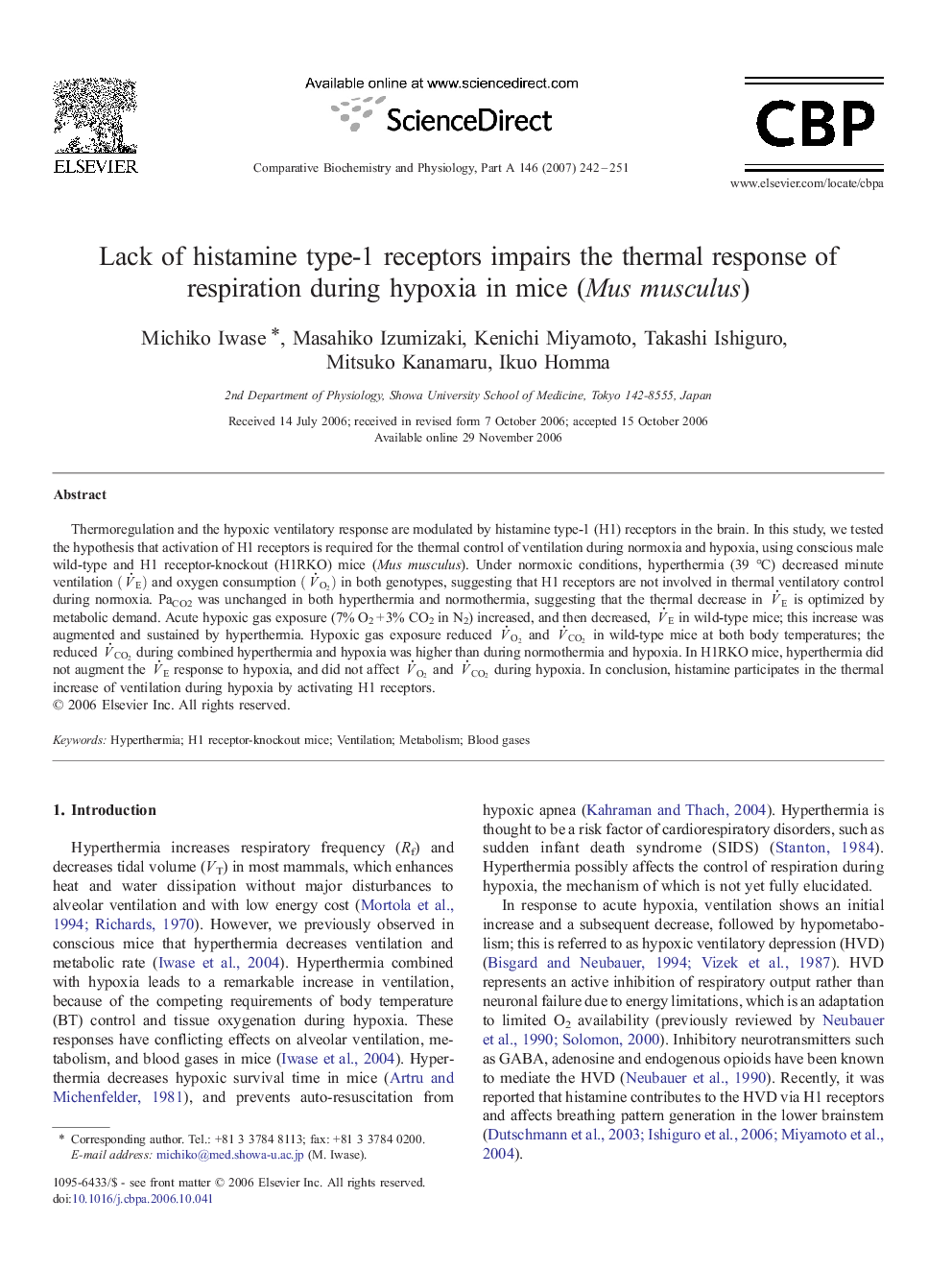| Article ID | Journal | Published Year | Pages | File Type |
|---|---|---|---|---|
| 1974372 | Comparative Biochemistry and Physiology Part A: Molecular & Integrative Physiology | 2007 | 10 Pages |
Abstract
Thermoregulation and the hypoxic ventilatory response are modulated by histamine type-1 (H1) receptors in the brain. In this study, we tested the hypothesis that activation of H1 receptors is required for the thermal control of ventilation during normoxia and hypoxia, using conscious male wild-type and H1 receptor-knockout (H1RKO) mice (Mus musculus). Under normoxic conditions, hyperthermia (39 °C) decreased minute ventilation (VËE) and oxygen consumption (VËO2) in both genotypes, suggesting that H1 receptors are not involved in thermal ventilatory control during normoxia. PaCO2 was unchanged in both hyperthermia and normothermia, suggesting that the thermal decrease in VËE is optimized by metabolic demand. Acute hypoxic gas exposure (7% O2 + 3% CO2 in N2) increased, and then decreased, VËE in wild-type mice; this increase was augmented and sustained by hyperthermia. Hypoxic gas exposure reduced VËO2 and VËCO2 in wild-type mice at both body temperatures; the reduced VËCO2 during combined hyperthermia and hypoxia was higher than during normothermia and hypoxia. In H1RKO mice, hyperthermia did not augment the VËE response to hypoxia, and did not affect VËO2 and VËCO2 during hypoxia. In conclusion, histamine participates in the thermal increase of ventilation during hypoxia by activating H1 receptors.
Related Topics
Life Sciences
Biochemistry, Genetics and Molecular Biology
Biochemistry
Authors
Michiko Iwase, Masahiko Izumizaki, Kenichi Miyamoto, Takashi Ishiguro, Mitsuko Kanamaru, Ikuo Homma,
